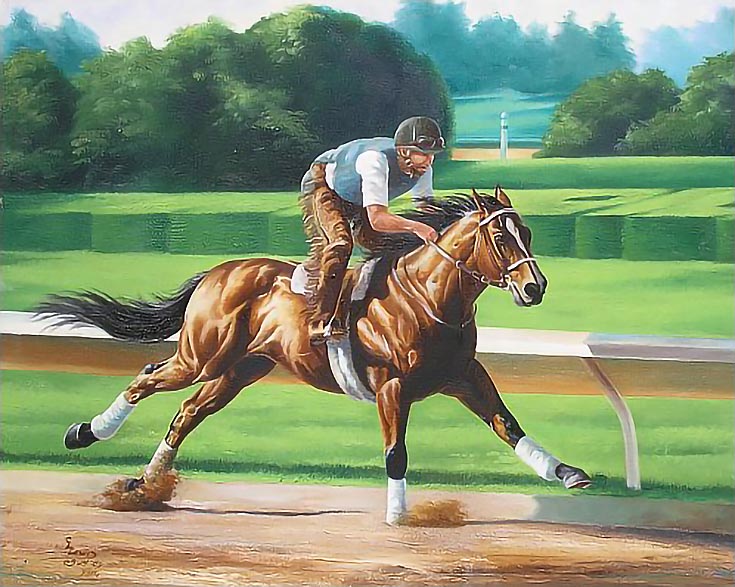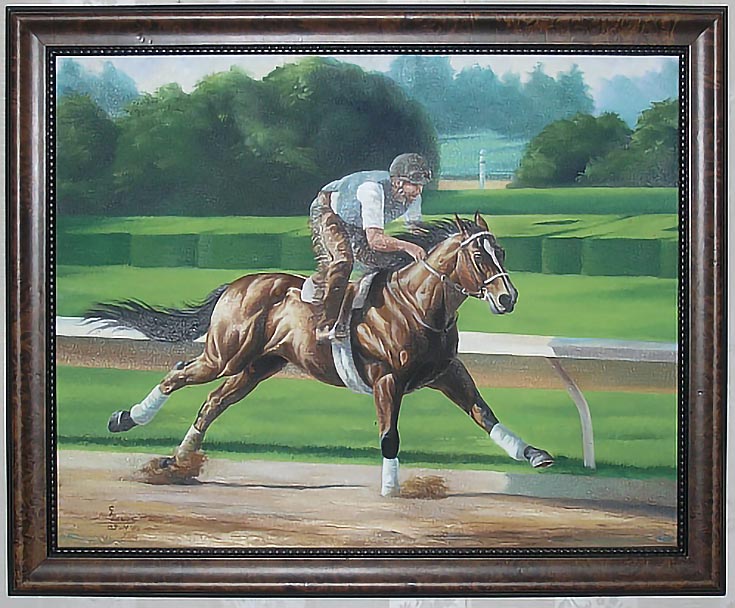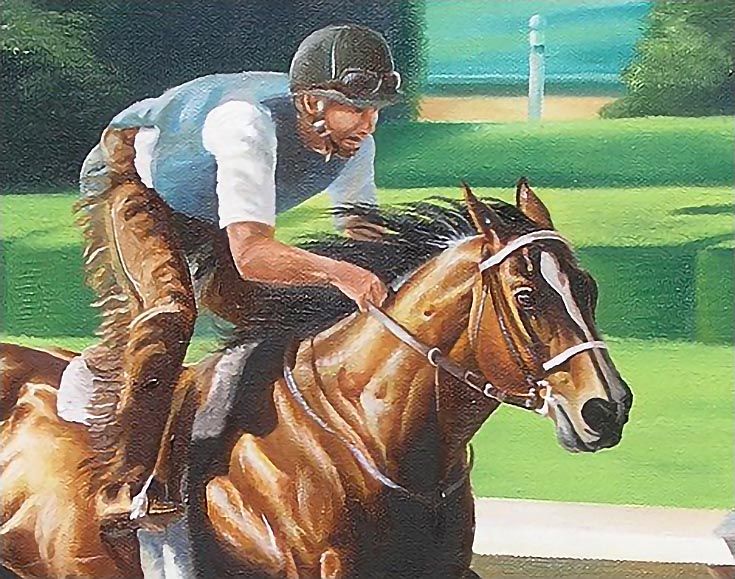Even if you’re not a particularly prolific artist, when you paint long enough, sooner or later you’ll find yourself with a bunch of old paintings. If you have unlimited space to store them or a large family willing to accept your gifts of art, you’re all set.
But what if you don’t have a lot of storage or a big family (or family members willing to receive your art)? What do you do with all those old paintings?
Here’s a painting that’s over ten years old. It was from a series I made for a specific show in 2003. Although it’s lost a lot of its panache, it’s still my favorite of the bunch.
But it’s been over ten years now, and there it is, still hanging on my wall. So let’s use it as an example of ways you might reuse or recycle your old paintings.
1. Repackage it with a new frame
Let’s start with something simple. Maybe all it needs is a new frame. I had one large colored pencil painting that went through two framings before I found the right solution. Granted, it took a willingness on my part to pay someone with framing expertise to finally get things right, but it was worth the effort.
Here’s a photo of the current frame I have on my painting. Pretty plain, right?
That could be the reason I still have the painting. The target market for this type of painting generally prefers more ornate and classical frames. Finding a frame that fits that description could very well result in a sale.
If your paintings or drawings are representative of your current work and are good enough for exhibits and shows, try a simple “frame lift” first. This doesn’t have to be an expensive exercise. If you have a lot of paintings or drawings that are the same size, just swap frames and see what happens.
With works on paper, you might need to change only the mats or maybe just the frame to find a better solution. Another option is to try a remarque. A remarque is a small original sketch drawn on one of the mats and “framed” by a second or third mat. Pair it with a title plate (brass of course) and that might be all you need to do to spruce up that old drawing and make a sale.
2. Redesign it
Usually this means cropping larger works into smaller compositions. You can often get one or two smaller compositions from a larger one. You may even be able to create a series.
For this painting, the only usable crop is shown below. There aren’t really any other focal points that I could use to make additional works, but still, this is much tighter and more interesting.
If I reworked it to add a little detail and subdue the background, this could be a winner.
Even paintings on rigid supports can be cropped and resized. It takes a careful hand and the proper equipment, but if you have access to precise cutting equipment, it can be done.
Squeamish about cutting up an existing piece of art? Try various crops on the computer first.
You can crop, section, and resize a digital image as much as you like, find the best possible compositions and still have the original work. If you don’t find any crops you like, no harm done! But if you do, you can cut down the original piece with confidence.
3. Hold an “Open Studio” event
Some artists host annual or semi-annual open studios. Everything is available for purchase. Old and new and everything in between. For some of the older works—works that no longer fit into your body of artistic endeavor—special discounts may apply. You might also try selling artwork unframed.
Sometimes showing off your work in a different setting makes all the difference. Give your customers—old and new—a reason to visit your studio, to see behind the scenes, and you may be surprised at the results.
4. Reuse the support
Sometimes, a new package makes no difference and there’s no good way to crop a drawing or painting so that it’s marketable. It’s either too old to fit into your current body of work or it’s just not something you want to market for some other reason.
In that case, the highest value may be the support itself, especially if it’s a quality support. You have several options available depending on the materials used:
For rigid supports—sand down to the original surface. Be careful not to sand through the surface if you used Masonite or a canvas panel. Wood panels are generally good to go once you’ve removed all the paint and ground. You can even sand a little bit into the surface and do no harm if the panel is thick enough.
Then reprep the surface as though it was new and you’re all set.
For canvas—you can sand a canvas, but it’s not advisable to use a power tool unless you have extremely good touch control. A sanding pad or sand paper is far better. You don’t need to sand all the way through the painting, but you will probably want to smooth out the texture, especially if you paint impasto.
Or maybe all that impasto will work great for a new painting!
To paint over an old oil painting, wipe it first with half an onion to loosen and soften the paint. Then wipe it with either linseed or walnut oil (depending on whether your paint is ground with linseed or walnut oil). Spread the oil around with your bare hand, then use a clean paper towel to remove the excess.
If you want an opaque surface to paint on (so the old painting doesn’t show through) paint a layer of burnt umber over the prepped surface. Burnt umber doesn’t fade and it remains opaque. Give it two or three weeks to dry and check the paint film by scraping it lightly with a razor blade. If you get a light powder, you can safely paint over the burnt umber. If you get a thin roll on the blade, let it dry another week.
This step is important because if the burnt umber isn’t sticking to the old painting, the new painting won’t stick either.
For paper—you have a few less options for reusing paper, especially if you used heavy color layers on the original drawing. You can, of course, always turn the paper over and work on the back.
You can also spray the front with retouch varnish and change the original drawing. Or you can cut it up and incorporate it into a collage.
These are only a few of the possibilities for dealing with old inventory. Whatever you do, make sure you don’t end up underselling yourself and devaluing your current work. Decide with care and deliberation how to best deal with those old paintings. . . then use your imagination and get to work!
This post may contain affiliate links.




